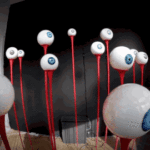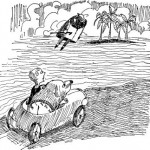The best stories add a little artifact umph.
It’s time to consider the other ways your stories can engage readers. Narrative artifacts allow you to build dimension into the universe of your story and are universally applicable. From journalism to video games, artifacts are key to pulling in and keeping your audience.
Narrative artifacts are the things that surround and add to universe of your narrative. In many ways they are one of the most important elements of a transmedia experience.
Image via Wikipedia
Definition:
A narrative artifact is a self-contained narrative fragment of a storyline that is separate, related or parallel to the central narrative.
It is often the first step in building the sense of a greater universe around a central story or character and comes in three formats:
- Narrative-centric: A narrative fragment internal to a story, one that both users and characters can interact with meaningfully. A good example is a map of the continent the characters are on. Though it is within your central narrative thread, its very existence suggests a larger universe outside of the character’s perceptions.
This is an artifact that intersects with your main narrative thread. - Narrative-parallel: A narrative fragment that runs outside of the story but still relates to it. This is often in a format that may or may not be accessible to characters of the story but is accessible to the reader. While it exists in the universe of your story it is not directly part of the narrative thread. A good example is a chapter from a book about something relating to, but not of the story, one that does not involve the primary characters.
This is an artifact that runs parallel to your main narrative thread. - Narrative-additive: A narrative fragment completely external to the story. It is not accessible to the characters of the narrative, nor are they aware of it. A good example is an epigraph. It may be part of the same universe of the story, perhaps even involving some of the same characters, but it is not part of the actual story. It does not necessarily directly relate to the narrative either.
This is an artifact that adds depth to your narrative thread without being part of it.
I intend to go into greater depth on each of these types of narrative artifacts, how they were used in the past and how they could be used in the future. Each narrative artifact type will get its own post in the series. Stay tuned!































[…] I think that there is another commenting issue to address. Comments on a blog post or article are narrative-additive artifacts. This means that comments are part of the overall narrative of your […]